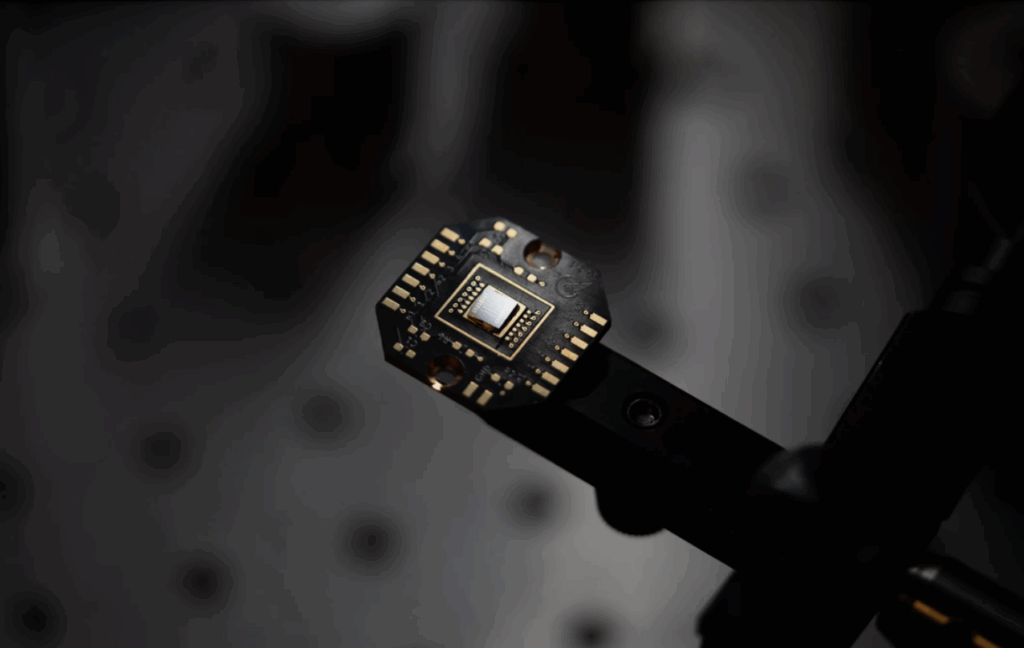Insider Brief
- Cornell University has installed a high-performance cryostat to support research aimed at projects, such as improving superconducting electronics and quantum computing components.
- The BlueFors LD250 cryostat, operational since October 2024, reaches temperatures as low as 10 millikelvin using helium isotopes, enabling the study of quantum effects near absolute zero.
- Researchers are using the system to investigate Josephson junctions and transmon qubits, with a focus on understanding signal loss and material quality in quantum circuits.
- Image: Rachel Cohn, cryostat manager. (Cornell University)
A high-performance cryostat installed at Cornell University is helping researchers explore the limits of superconducting electronics, with potential implications for improving quantum computing hardware.
The machine, a BlueFors LD250, was installed in the basement of Clark Hall in summer 2023 and became fully operational in October 2024, according to a news release from Cornell University. Purchased with funds from the James R. Meehl Equipment Fund, the cryostat allows researchers to study materials and devices at temperatures approaching absolute zero, just fractions of a degree above minus 273 Celsius.
The cryostat works by compressing and expanding helium gas, then using a special technique involving two helium isotopes — He-3 and He-4 — to reach temperatures as low as 10 millikelvin. That’s about one-hundredth of a degree above absolute zero, the point at which nearly all atomic motion stops. At these temperatures, ordinary materials behave in unusual ways, and certain metals lose all electrical resistance, a phenomenon known as superconductivity.

With the arrival of a full-time cryostat manager in August 2024, the device is now supporting multiple experiments focused on improving superconducting electronics used in quantum circuits.
“The facility encourages collaborative projects that enhance the quantum science efforts at Cornell,” said Rachel Cohn, who is the cryostat manager and who is responsible for all aspects of the cryostat: scheduling, budgeting, and maintaining, as well as assisting users with loading samples or performing measurements. “For example, one of our users is researching how qubits — which are the quantum analog of bits in a classical computer — can lose the information that is encoded in them. Understanding these loss mechanisms can help minimize that loss and make quantum computers more efficient.”
Scientists are also using it to measure current-voltage properties of Josephson junctions — superconducting structures that allow quantum signals to pass through a barrier without resistance. These measurements are essential to improving the reliability and consistency of components used in quantum devices.
Another project focuses on transmon qubits, a leading type of quantum bit made from superconducting circuits. These qubits are the building blocks of many quantum computers currently under development. However, their performance depends heavily on the quality of the materials and the precision of fabrication. Researchers at Cornell are using the cryostat to evaluate how different materials and device architectures affect the lifetime and stability of these qubits.
The cryostat’s extreme cooling capabilities make it a vital tool for testing these next-generation quantum components under real-world operating conditions. By reaching temperatures close to those used in commercial quantum computers, the machine enables lab-scale studies that could inform improvements in large-scale quantum systems.


















